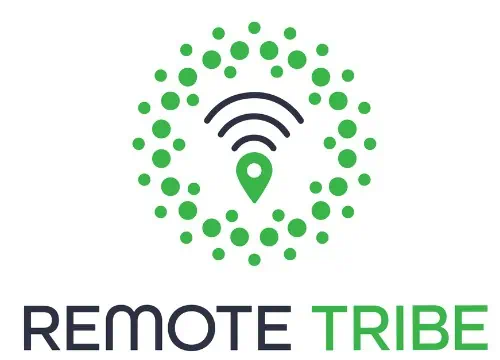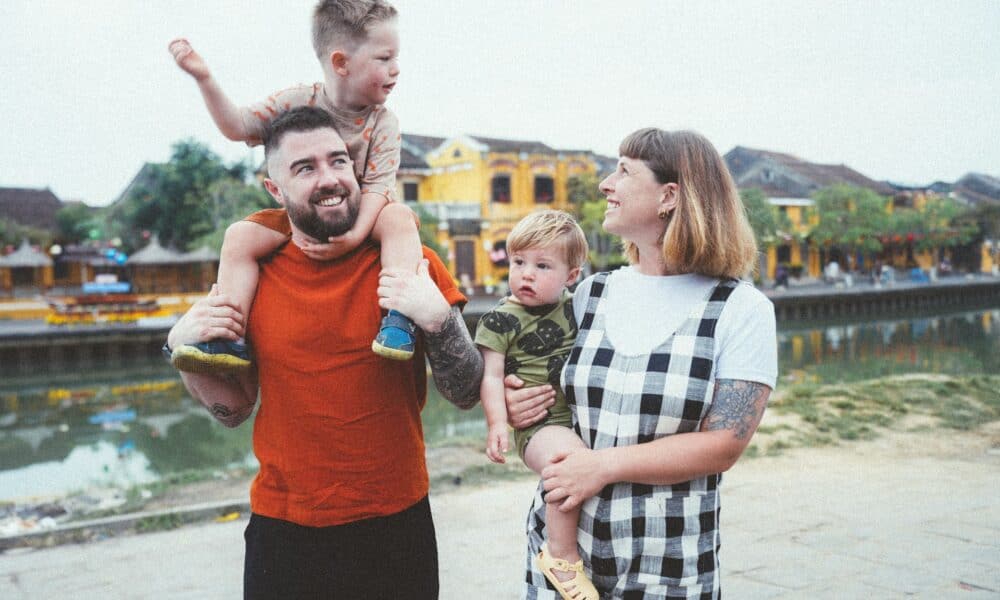Being a parent is hard. For digital nomads, it’s even harder. The freedom to work and explore on their own terms seems, at least on the surface, to be incompatible with raising a family.
The challenges feel visceral. Missed deadlines pile up during toddler meltdowns. Homeschooling feels overwhelming without a curriculum. Planning a family vacation becomes more of a choice based on where high-speed internet connection is available, rather than where you all want to go.
Yet thousands of families prove it’s possible to thrive—if you adopt systems, not just ideals. Ideals are great in theory, but unless you can translate them into a system that works for you, that’s all they will be.
Here’s how to give your new family what they deserve without compromising who you are:
1. Segment Your Day Like a CEO
Blurring work, parenting, and travel guarantees burnout, so divide your day into blocks:
- Work: Schedule high-focus tasks during your child’s most independent hours (e.g., mornings after breakfast or during naps).
- Family: Dedicate uninterrupted time for meals, playtime, or whatever else you find valuable.
- Self-care: Protect 20–30 minutes daily for exercise, reading, or quiet reflection
An example of how that works: a freelance writer with a 3-year-old works 6:30–8:30 AM while their child plays with Montessori toys. They explore a local market together from 9–11 AM, then use the child’s 1–3 PM nap for client calls. Evenings are device-free for cooking and language games.
But what if emergencies wreck the schedule? Bake in a set amount of time each day for surprise tasks you simply can’t put off. Think of them as bonus family time if they go unused!
2. Hack Homeschooling Without a Teaching Degree
Forget replicating a classroom. Combine accredited online tools with real-world learning:
- Use platforms like Khan Academy for math basics or Outschool for live science classes.
- Turn grocery shopping into currency conversion practice.
- Assign “travel journals” to document ecosystems or interview locals about history.
For example, a 6-year-old learns fractions by doubling a pancake recipe and geography by plotting your road trip across Spain. Rotate teaching duties to reduce the risk of burnout.
Won’t my child lack social skills? Join family co-working hubs with kid-friendly spaces or enroll in local workshops. In Mexico City, sign up for weekend art classes; in Lisbon, try surf camps—work with what’s available!
If you want to become a digital nomad or find your crew, sign up for our free newsletter and get upcoming articles straight to your inbox!
We’ve got some great content on our Instagram and on our Facebook Group too where you can network with other nomads from all over the world.
Subscribe to our Newsletter
Get The Latest News On Digital Nomad Lifestyle, Remote Working Communities
And Much More.
100% spam free. We never share your email address. Unsubscribe anytime!
3. Redefine “Vacation” as a Daily Habit
Forget cramming adventure into annual two-week breaks. Weave exploration into your routine:
- Dedicate weekends to regional trips (e.g., a volcano hike in Guatemala).
- Use weekday evenings for micro-adventures: street food tours, museum visits, or beach sunsets.
- Alternate “deep work” months (staying 6–8 weeks in low-cost bases like Vietnam) with “slow travel” phases (road-tripping through Europe).
Constant moving exhausts kids—yes, we know. Anchor routines with familiarity: Friday pizza nights, a beloved stuffed animal, or a portable whiteboard for daily lesson plans.
4. Automate Logistics to Eliminate Daily Chaos
Decision fatigue sinks nomadic families. Systematize repetitive tasks:
- Create checklists for packing, visa renewals, and health insurance.
- Pre-book rentals with kitchens/workspaces (use Airbnb’s “family-friendly” filter).
- Automate finances: bill payments, client invoices, savings transfers.
- Keep your data safe: manage your data security well ahead of your travels so you always have what you need when you need it.
A useful way to go about it is to have a “move day” protocol: Kids pack their backpacks (tablets, toys) while parents handle luggage. They always arrive in new cities by noon to unpack before work resumes.
Doesn’t planning kill spontaneity? Reserve 10% of your schedule for surprises. Extend your stay if the kids love Bali’s monkeys, or book a last-minute boat trip if the weather shifts.
5. Diversify Income to Survive the Unexpected
One lost client can derail a nomadic family. Build multiple revenue streams:
- Allocate 70% of work hours to core clients.
- Spend 20% on passive income (e-books, stock photos).
- Dedicate 10% to side hustles (affiliate marketing, travel blogs).
For instance, designer parents earn through client projects, sell Canva templates, and monetize a newsletter via sponsorships. Side projects can distract from main work, but there’s a fix for that, too. Batch-create passive content during school breaks or hire a VA for administrative tasks. Just make sure you give each of them a long, hard look before submitting!
6. Embrace Imperfection
Social media glorifies nomadic life. Reality involves tantrums in train stations and frozen pizzas. Normalize the mess:
- Let kids watch educational shows during client emergencies.
- Swap a missed history lesson for a museum visit next week.
- Apologize to clients when chaos erupts (“Family first here—let’s reschedule”).
Let’s say that, during a Zoom pitch, your baby screams. Don’t apologize. Just say, “Let’s reconnect in 30—parenthood calls!” Most clients appreciate the honesty.
The Blueprint in Action: Why This Works
Nomad families don’t “balance” work, school, and travel—they merge them into a fluid rhythm. Some weeks prioritize income; others focus on snorkeling lessons. By segmenting time, automating logistics, and anchoring kids with routines, you create stability within adventure.
Start with a one-month trial. Refine systems. Iterate. Your reward? Kids who debate politics in second or third languages, clients who trust your commitment, and sunsets viewed from a Moroccan riad instead of a cubicle.
Your Travel Resources Handy In One Place 🗺️
🧳 Travel Insurance
Enjoy peace of mind during traveling and don’t leave your country without good travel insurance. We recommend Insured Nomads or Genki for international travel insurance.
💰Travel Finances
Get your travel finances smart and straight with Wise or Revolut.
🏨 Accommodations
For a short stay check out Booking or Agoda. Staying longer? Take a look at the offers at Airbnb. Hostels are the cheapest option that you can explore at Hostelworld.
🏡 Recommended places for long-term stay
Wanna know the accommodations where we lived during our digital nomad journey? Check out the places we enjoyed the most!
🎫 Book tours
Are you up for taking part in epic guided tours? Book ones you like using GetYourGuide or Viator.
🚗 Rent a car
To find great rental car deals check out Rental Cars and get ready for your car trip!
✈️ Book a flight
For the hottest deals check out Skyscanner, Kayak, Google Flights or WayAway.
🛡️ VPN
To stay safely connected while traveling, don’t forget about a good VPN. We recommend Surfshark or NordVPN.








No Comment! Be the first one.